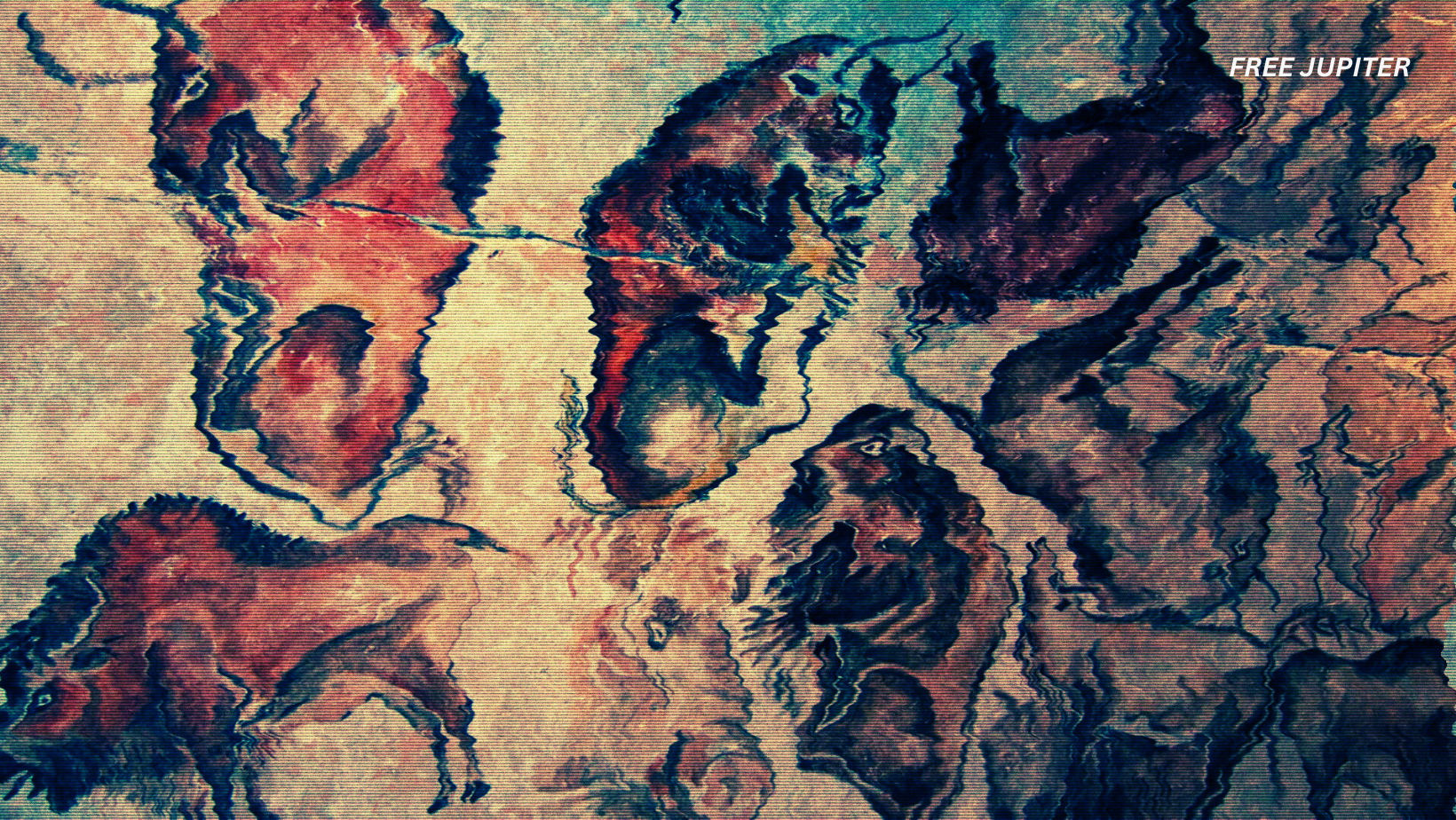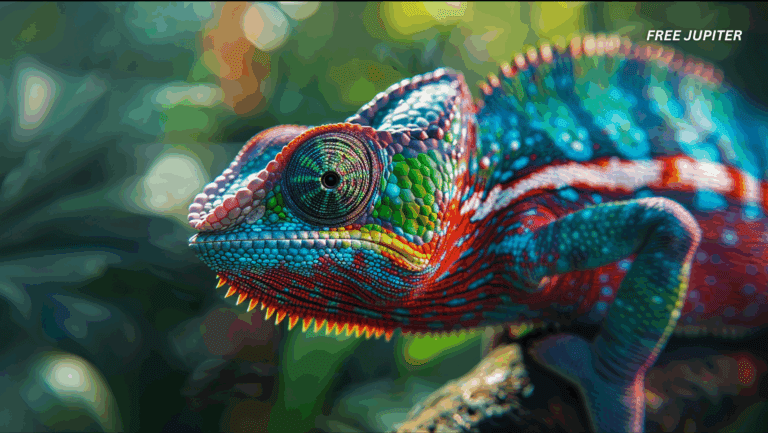In the heart of Colombia’s lush Amazon, ancient cliffside canvases have been quietly telling a forgotten story. Deep within the remote Serranía de la Lindosa, a collection of rock paintings has come to light—believed to be more than 12,000 years old. These vivid artworks, rendered in enduring shades of ochre, are now thought to contain one of the earliest records of prehistoric human life in South America.
Painted across towering cliff faces, this ancient art offers more than just a peek into the distant past. Hidden among the intricate patterns and silhouettes are figures of colossal animals—creatures that, until recently, were believed to have vanished thousands of years before humans ever set foot in this part of the world.
A Window Into the Distant Past
This discovery, located in Colombia’s Guaviare Department, marks one of the most remarkable archaeological findings in recent years. Known as the Serranía de la Lindosa, the area has long been admired for its biodiversity and ecological importance. But now, its cliffs have revealed an entirely different legacy—one painted in the earthy reds and yellows of natural ochre, drawn by hands that lived over twelve millennia ago.
What has been uncovered is far more than decorative. These paintings tell a story of a people in tune with their land, their animals, and their spiritual world. And intriguingly, they might offer evidence of encounters with animals that were assumed to have died out long before these paintings were ever imagined.
Echoes of Forgotten Giants
Among the thousands of drawings scattered across the rock face, a number of striking images have sparked considerable debate among scientists. Towering figures of strange creatures—some resembling giant sloths, others resembling elephantine mammals—appear side by side with deer, birds, and turtles.
Megafauna, large animals that roamed the Earth during the Pleistocene Epoch. Creatures like Megatherium (giant ground sloths) and Gomphotheres (a distant cousin of the elephant) may have been among those captured in ochre by ancient artists. If these depictions are accurate, it would mean early Amazonians not only lived alongside these giants but memorialized them in their art.
This possibility challenges long-held timelines. For decades, it had been assumed that such animals had gone extinct before humans had fully settled the region. But if these paintings are truly 12,500 years old—and if the images do indeed depict real megafauna—it may suggest that human migration into the Amazon began earlier than previously thought.
An Artistic Legacy Carved in Stone
The tools used to create these timeless works were simple but effective. Natural pigments, primarily red and yellow ochre, were likely extracted from minerals and plants found in the surrounding forest. Once applied to the porous cliff surface, these colors proved remarkably resilient—surviving millennia of rain, sun, and plant growth.
The art itself varies in complexity. Some figures appear simplistic, with bold lines and basic shapes. Others are more intricate, with clear attention to anatomy and movement. This contrast suggests that different generations, perhaps even different tribes, may have added to the collection over time. In many ways, the cliffs of La Lindosa resemble a prehistoric mural—layered, evolving, and deeply human.
Read more: Archaeologists Find an Ancient Temple Hidden in the Heart of a Cliff
Daily Life Frozen in Time
Beyond the animal imagery, a rich tapestry of daily life can be seen. Human figures are depicted performing familiar activities: hunting, dancing, climbing, and socializing. Scenes suggest the use of tools, the herding of animals, and even ceremonial gatherings. These visuals offer one of the most comprehensive glimpses into prehistoric life ever discovered in the Americas.
In some panels, hunters are shown using bows or spears, targeting animals mid-stride. In others, families appear gathered in a moment of shared ritual or celebration. The presence of children and the elderly, inferred from the size and posture of the figures, adds an intimate layer to the broader narrative.
Such representations provide more than just archaeological data—they humanize the past, giving voice and shape to those who lived, worked, and dreamed in these ancient forests.
A Mythology Painted in Red
Perhaps most mysterious are the images that seem to cross the boundaries between human and animal. In several instances, hybrid creatures can be seen—half-human, half-beast. These enigmatic forms have been interpreted by researchers as symbols of shamanic rituals or spiritual beliefs.
Such imagery suggests that the people of the region maintained a complex worldview. In their universe, nature was not something separate from humanity, but an extension of it. The blending of forms could imply a belief in transformation, interconnectedness, or the presence of spirit beings capable of moving between worlds.
These images add a mythological layer to the already vibrant narrative. They hint at early religions or cosmologies in which the lines between human and animal, physical and spiritual, were blurred.
An Amazon Rich in Life—Then and Now
The biodiversity represented in the artwork reflects the ecological richness that has long defined the Amazon. Animals recognizable even today—tapirs, monkeys, birds, reptiles—feature prominently in the paintings. The accuracy with which they are depicted reveals a deep familiarity with the creatures of the forest.
Such images not only document wildlife but also suggest how closely humans lived in harmony with their environment. The animals are not portrayed as abstract or symbolic, but as central players in everyday life. This coexistence with nature remains a key part of Amazonian identity, both in the past and in present-day indigenous communities.
A Link to Living Cultures
While the paintings are ancient, their relevance has not faded. For many indigenous communities in the region, the rock art is more than archaeological evidence—it is a connection to ancestry. These images serve as a form of cultural memory, reflecting stories, beliefs, and identities passed down through countless generations.
Recognizing the importance of this heritage, researchers have worked closely with local communities. Efforts are being made to ensure that any study or conservation initiative is done with respect and collaboration. It is a reminder that history is not just something to be studied—it is something to be shared and protected.
Read more: Beautiful Relics From Ancient Egypt Were Found In Hidden Chamber Down A 14-Meter Shaft
Comparing Past Across the Continent
Similar rock art has been uncovered in other parts of South America. From Brazil to Venezuela, echoes of prehistoric expression can be found in caves, cliffs, and forested valleys. When studied together, these artworks reveal both regional distinctions and common themes.
Cross-site comparisons allow researchers to trace cultural connections, migration routes, and shared symbolic languages. Though separated by hundreds of miles, many of the drawings exhibit striking similarities—suggesting that ideas, stories, and techniques were traded between ancient communities across the continent.
Such findings support the theory that early South Americans were far from isolated. Instead, they likely formed a network of interaction, exchanging not only goods but also art, beliefs, and identities.
A Glimpse for the World—From Afar
Due to the remote nature of the site and the fragility of the paintings, public access remains restricted. However, documentaries, virtual tours, and 3D recreations have been developed to bring this lost world to the global stage.
These efforts allow anyone, anywhere, to experience the wonder of Serranía de la Lindosa. Through screens and speakers, the ancient voices of the Amazon are being heard once again—whispering stories from a time when giants roamed the Earth, and humans first etched their memories into stone.










